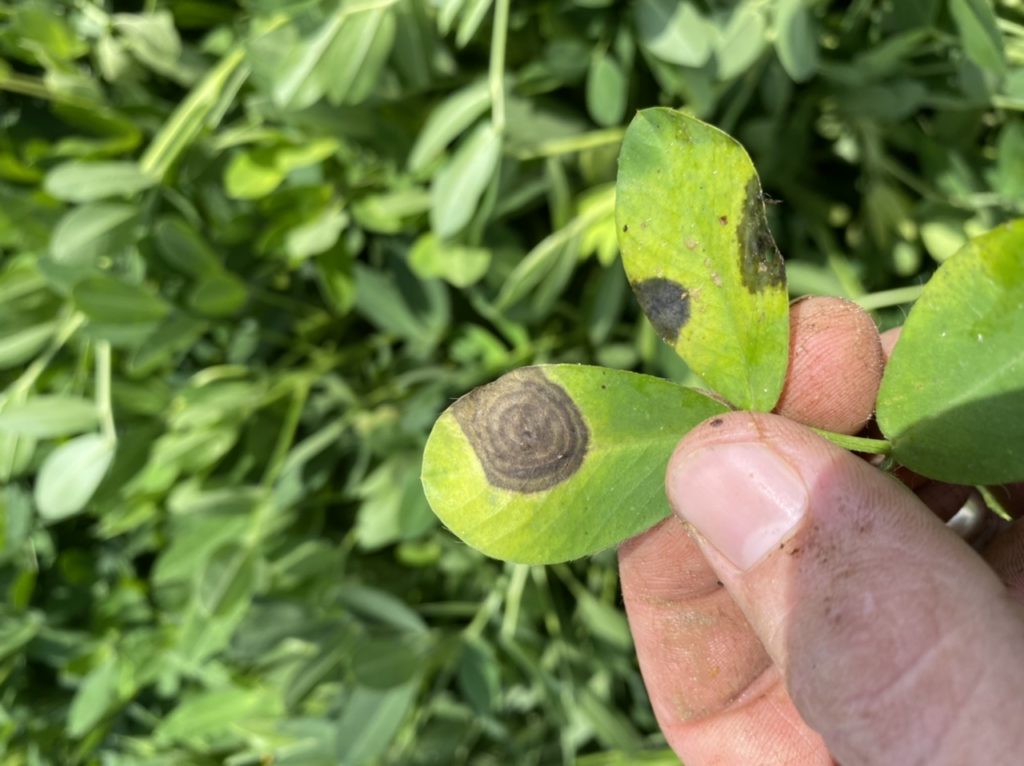It is time to start considering Peanut Maturity checks. Some fields seem to be ahead of schedule!
How to Sample
A good sample will improve accuracy of digging date. Pull up or dig up at least 5 to 6 plants at a time from at least three representative parts of a field. Remember to only sample an area that you can/dig harvest in a day. Separate out irrigated from dry corners and sandy area.
When picking the peanuts off the vine do one vine at the time and pick it clean. We need all the peanuts to get a good representative sample of the vine crop. It is best to get a vine from each of you three bunches each time. You want a good even representation. Getting most of the nuts from one bundle may skew your accuracy and dig time.
You want around 200 peanuts per sample or one Quart. If it will be a while before you can bring the sample in then pick off the sample and keep the peanut pods in a bucket of water to keep them fresh.
It is best to keep the vines and bring them with you so we can check for disease and peg strength.
Disease Update By: Bob Kemerait
It’s hard to believe we’ve reached September, later in the 4th quarter of the 2022 field season.
Rating a cotton trial with Jeremy yesterday, we both noted that we haven’t been seeing as much areolate mildew or peanut leaf spot as we would expect in a wetter year such as this. Our general conclusion was that cotton and peanut growers have been aggressive and successful in their disease management programs. But there is time left for that to change.. Growers should NOT let up now in their management programs.
The first two pictures are from Ben in Berrien Co. Excellent example of the disease “early leaf spot” . Note on the top side of the leaf you can make out the presence of rough conidia (asexual spores). Note that on the underside of the leaf, the brown lesion is smooth. Classic for early leaf spot.
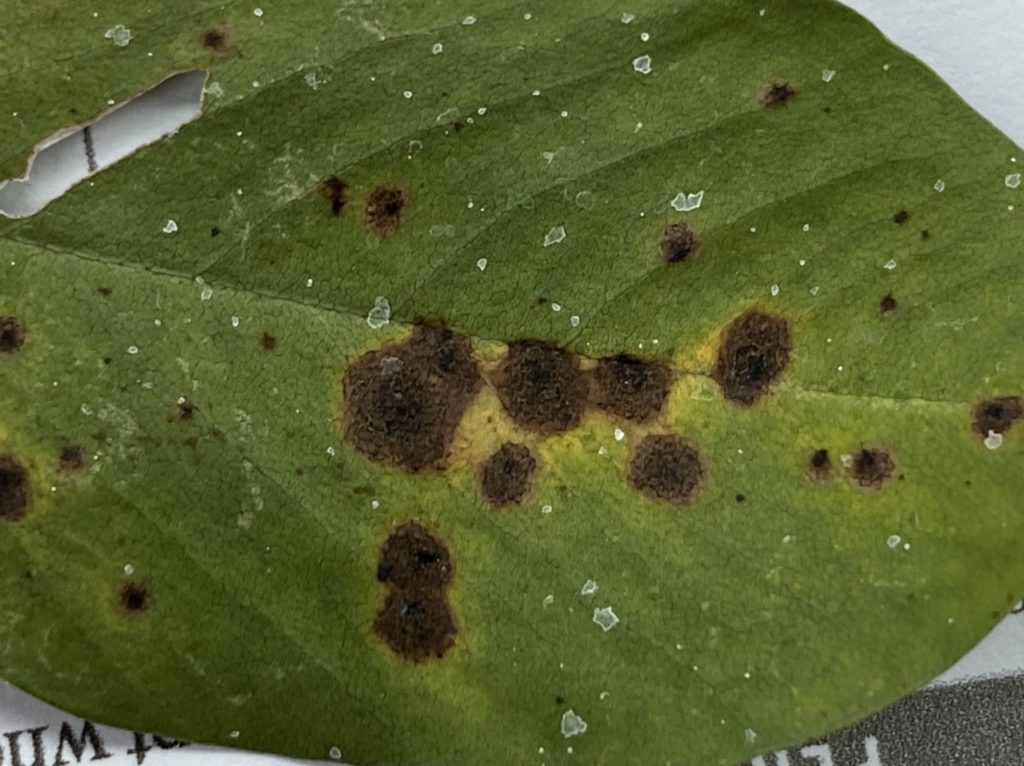
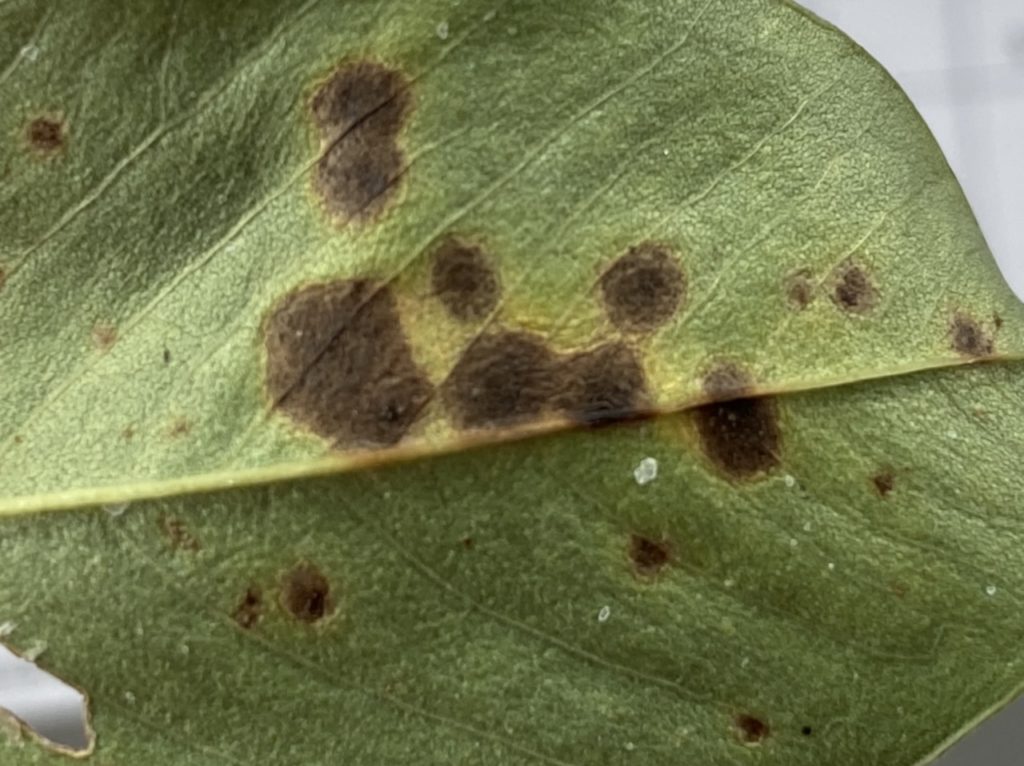
Pic 3 came from our buddy Paul Wigley yesterday. Note that these spots are a bit smaller, but also darker black than the brown lesions in the pics from Ben. The spots in the image from Paul are “late leaf spot” and that conidia (asexual spores) are not present on the top of the lesion. Also note that these spots are encircled by yellow halos. This occurs most often with early leaf spot lesions and chemical burns, BUT can occur on late leaf spot as well.
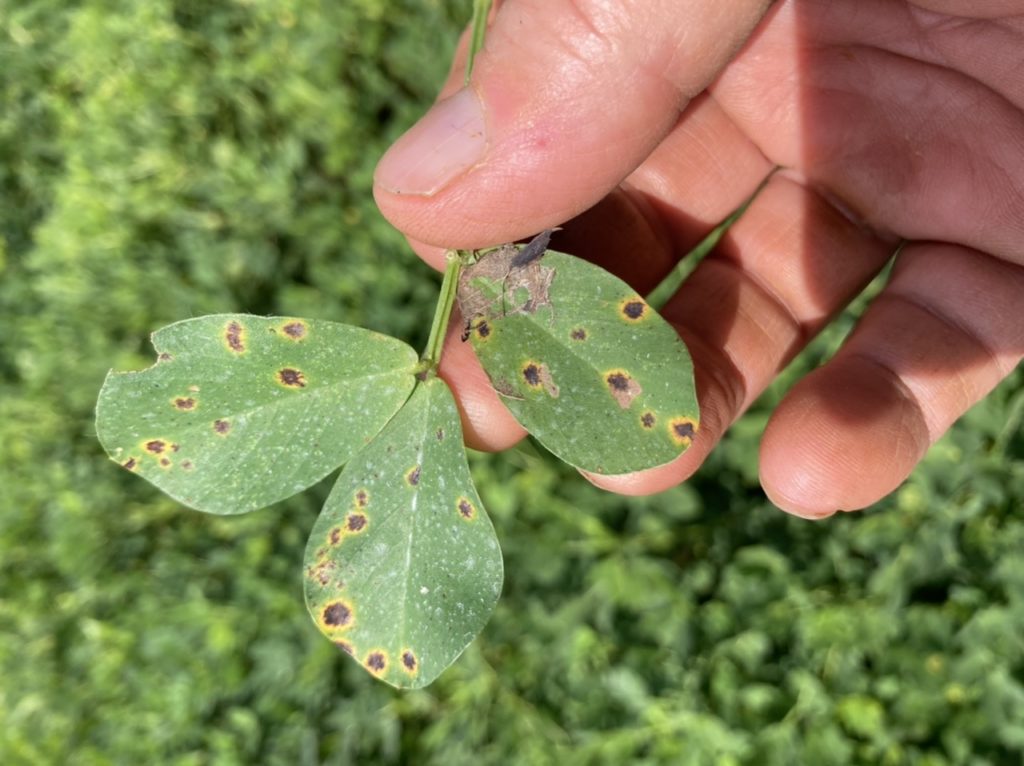
Pic 4 is from Jeremy and shows the UNDERSIDE of a late leaf spot lesion. Note the same black color as in Paul’s pic, but also note the carpet of black conidia that is present. Late leaf spot often has profuse sporulation on the underside of the leaves.
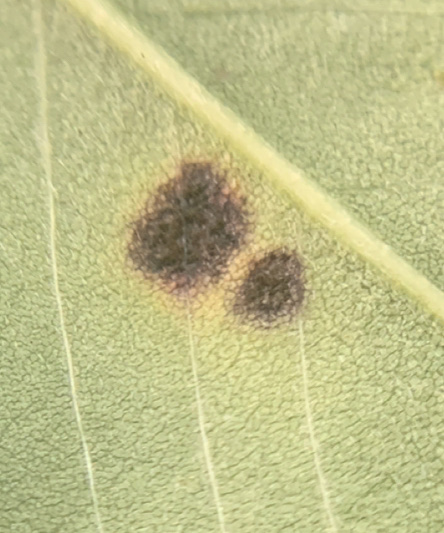
Not all foliar diseases of peanut are rust, early leaf spot, or late leaf spot. There are a number of other leaf diseases, but typically these cause only cosmetic damage.
The last picture came yesterday from Seth in Terrell Co. To a plant pathologist, this large spot with concentric rings is gorgeous. I’m not sure exactly what caused it without looking at it more closely. It could be aerial Rhizoctonia. It could be associated with the fungus Botrytis. It could be associated with the fungus Chistulariella. Aerial Rhizoc can be a problem, the other two diseases are fairly rare.
